
John C. Browne (born July 29, 1942) is an American physicist.

John C. Browne (born July 29, 1942) is an American physicist.
He was born in Pottstown, Pennsylvania as the fifth child of Charles I. and Mary Agnes (Titzer) Browne. He received a B.S. in physics from Drexel University (1965). He received a Ph.D. in physics from Duke University (1969). His thesis was titled "Fine Structure of Analog States in 61,63,65-Cu".
After teaching at Duke University (1969–70), he joined Lawrence Livermore National Laboratory in Livermore, California, where he did research in basic and applied nuclear physics at a 100-MeV electron linac, including studies in nuclear fission and nuclear astrophysics.
He joined Los Alamos National Laboratory in 1979 as head of Group P-3, the neutron physics group in the LANL physics division, helping to start a new research effort in weak interaction physics. He became physics division leader in 1981, succeeding George A. Keyworth, who became President Ronald Reagan's science advisor. In 1984, he was appointed associate director for experimental physics by lab director Donald Kerr. When Siegfried Hecker became lab director in 1986, he appointed Browne to a series of posts. In 1986, Browne became associate director for research with responsibility for programs and divisions associated with the research funded by the DOE Office of Energy Research. He then served as associate director for defense research and applications (1986–91) where he was responsible for programs funded by the Department of Defense and the Intelligence community. In 1991, he became associate director for computational and information sciences. In 1993, he took over responsibilities for the Los Alamos Meson Physics Facility, changing its name to the Los Alamos Neutron Science Center (LANSCE), reflecting its mission change to neutron science for materials science and for fundamental and defense-related neutron studies.
In 1997, he was appointed by the University of California to be the director of Los Alamos National Laboratory. [1] During his tenure, he strengthened the science-based stockpile stewardship program, created in the mid 1990s by Victor H. Reis of the DOE, which emphasizes computational study of nuclear weapons in the absence of nuclear testing. During Browne's tenure, the Wen Ho Lee spy investigation by the FBI erupted onto the national scene, particularly after release of the Cox Report by the US House of Representatives in 1999. Having started in the early 1990s, the controversy eventually culminated in Lee's release from prison. [2]
Also during Browne's tenure, the laboratory experienced growth in nuclear weapons research, counter terrorism, and intelligence research programs, including two new buildings (Non-Proliferation and International Security Center and Nicholas Metropolis Supercomputing Center). He was also instrumental in creating support for the non-profit Los Alamos National Laboratory Foundation, founded in 1997 to enhance the vitality of northern New Mexico through investing in education, learning, and community development. In January 2003, Browne resigned as laboratory director [3] [4] during a controversy surrounding thefts of government property by several employees and accusations regarding the adequacy of administrative controls. The controversy prompted Secretary of Energy Spencer Abraham to say: "... taken together, these problems have called into question the University of California's ability to run the Los Alamos National Laboratory." The University quickly installed Pete Nanos as succeeding director.
Browne is retired from Los Alamos and serves on a number of non-profit boards. He was appointed a Fellow of the American Physical Society in 1987 and a Fellow of the American Association for the Advancement of Science (AAAS) in 2000.

Los Alamos National Laboratory is one of the sixteen research and development laboratories of the United States Department of Energy (DOE), located a short distance northwest of Santa Fe, New Mexico, in the American southwest. Best known for its central role in helping develop the first atomic bomb, LANL is one of the world's largest and most advanced scientific institutions.
Lawrence Livermore National Laboratory (LLNL) is a federally funded research and development center in Livermore, California, United States. Originally established in 1952, the laboratory now is sponsored by the United States Department of Energy and administered by Lawrence Livermore National Security, LLC.
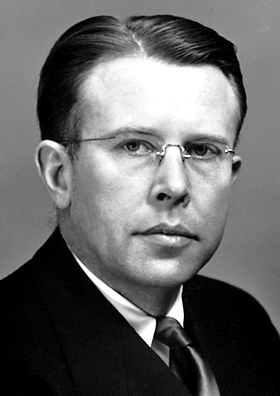
Ernest Orlando Lawrence was an American nuclear physicist and winner of the Nobel Prize in Physics in 1939 for his invention of the cyclotron. He is known for his work on uranium-isotope separation for the Manhattan Project, as well as for founding the Lawrence Berkeley National Laboratory and the Lawrence Livermore National Laboratory.
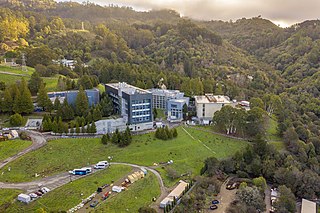
Lawrence Berkeley National Laboratory (LBNL) is a federally funded research and development center in the hills of Berkeley, California, United States. Established in 1931 by the University of California (UC), the laboratory is sponsored by the United States Department of Energy and administered by the UC system. Ernest Lawrence, who won the Nobel prize for inventing the cyclotron, founded the Lab and served as its Director until his death in 1958. Located in the hills of Berkeley, California, the lab overlooks the campus of the University of California, Berkeley.
Norris Edwin Bradbury, was an American physicist who served as director of the Los Alamos National Laboratory for 25 years from 1945 to 1970. He succeeded Robert Oppenheimer, who personally chose Bradbury for the position of director after working closely with him on the Manhattan Project during World War II. Bradbury was in charge of the final assembly of "the Gadget", detonated in July 1945 for the Trinity test.

The United States Department of Energy National Laboratories and Technology Centers is a system of laboratories overseen by the United States Department of Energy (DOE) for scientific and technological research. The primary mission of the DOE national laboratories is to conduct research and development (R&D) addressing national priorities: energy and climate, the environment, national security, and health. Sixteen of the seventeen DOE national laboratories are federally funded research and development centers administered, managed, operated and staffed by private-sector organizations under management and operating (M&O) contracts with the DOE.
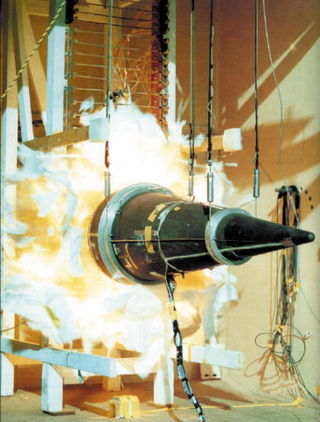
Stockpile stewardship refers to the United States program of reliability testing and maintenance of its nuclear weapons without the use of nuclear testing.

Robert Fox Bacher was an American nuclear physicist and one of the leaders of the Manhattan Project. Born in Loudonville, Ohio, Bacher obtained his undergraduate degree and doctorate from the University of Michigan, writing his 1930 doctoral thesis under the supervision of Samuel Goudsmit on the Zeeman effect of the hyperfine structure of atomic levels. After graduate work at the California Institute of Technology (Caltech) and the Massachusetts Institute of Technology (MIT), he accepted a job at Columbia University. In 1935 he accepted an offer from Hans Bethe to work with him at Cornell University in Ithaca, New York. It was there that Bacher collaborated with Bethe on his book Nuclear Physics. A: Stationary States of Nuclei (1936), the first of three books that would become known as the "Bethe Bible".

Michael Anastasio led two national science laboratories during a time of transition. He was the director of the Los Alamos National Laboratory and president of the Los Alamos National Security LLC, the company that operates the laboratory. He is the former director of Lawrence Livermore National Laboratory (LLNL). The University of California Board of Regents appointed Michael R. Anastasio the director of LLNL on June 4, 2002. He started on July 1, 2002. In 2005 he became the president of the Los Alamos National Security LLC, and became the director of the Los Alamos National Laboratory on June 1, 2006. During his directorship at Lawrence Livermore, the laboratory won 25 R&D 100 Awards and maintained its world-class leadership position in high-performance computing and its application to global climate modeling.

Stirling Auchincloss Colgate was an American nuclear physicist at the Los Alamos National Laboratory and a professor emeritus of physics at the New Mexico Institute of Mining and Technology from 1965 to 1974, of which he also served its president.

The Los Alamos Neutron Science Center (LANSCE), formerly known as the Los Alamos Meson Physics Facility (LAMPF), is one of the world's most powerful linear accelerators. It is located in Los Alamos National Laboratory in New Mexico in Technical Area 53. It was the most powerful linear accelerator in the world when it was opened in June 1972. The technology used in the accelerator was developed under the direction of nuclear physicist Louis Rosen. The facility is capable of accelerating protons up to 800 MeV. Multiple beamlines allow for a variety of experiments to be run at once, and the facility is used for many types of research in materials testing and neutron science. It is also used for medical radioisotope production.

Edward Moses is an American physicist and is the former president of the Giant Magellan Telescope Organization. He is a past principal associate director for the National Ignition Facility & Photon Science Directorate, where he led the California-based NIF, the largest experimental science facility in the US and the world's most energetic laser, that hopes to demonstrate the first feasible example of usable nuclear fusion.

Harold Melvin Agnew was an American physicist, best known for having flown as a scientific observer on the Hiroshima bombing mission and, later, as the third director of the Los Alamos National Laboratory.

Edward Creutz was an American physicist who worked on the Manhattan Project at the Metallurgical Laboratory and the Los Alamos Laboratory during World War II. After the war he became a professor of physics at the Carnegie Institute of Technology. He was Vice President of Research at General Atomics from 1955 to 1970. He published over 65 papers on botany, physics, mathematics, metallurgy and science policy, and held 18 patents relating to nuclear energy.
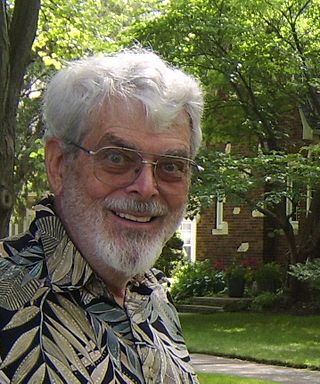
Johndale C. Solem is an American theoretical physicist and Fellow of Los Alamos National Laboratory. Solem has authored or co-authored over 185 technical papers in many different scientific fields. He is known for his work on avoiding comet or asteroid collisions with Earth and on interstellar spacecraft propulsion.
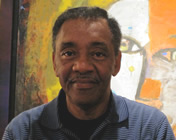
Milton Dean Slaughter is an American theoretical and phenomenological physicist and affiliate professor of physics at Florida International University. Slaughter was a visiting associate professor of physics in the Center for Theoretical Physics, University of Maryland, College Park while on sabbatical from Los Alamos National Laboratory (LANL) of the University of California from 1984 to 1985. He is also chair emeritus and university research professor of physics emeritus at the University of New Orleans (UNO). Prior to joining UNO as chair of the physics department: He was a postdoctoral fellow in the LANL Theoretical Division Elementary Particles and Field Theory Group (T-8); LANL Theoretical Division Detonation Theory and Applications Group (T-14) staff physicist; LANL Theoretical Division affirmative action representative and staff physicist; LANL assistant theoretical division leader for administration and staff physicist (T-DO); LANL Nuclear and Particle Physics Group staff physicist—Medium Energy Physics Division (MP-4); and LANL Historically Black Colleges and Universities (HBCU) project manager (laboratory-wide).
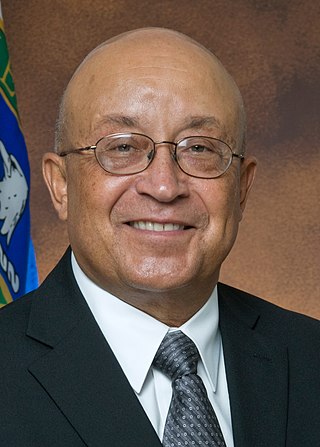
Warren Fletcher "Pete" Miller Jr. is an American nuclear engineer known for his work in the areas of computational physics, radioactive waste management, transport theory, nuclear reactor design and analysis, and the management of nuclear research and development programs.
John Hopkin Nuckolls is an American physicist who worked his entire career at the Lawrence Livermore National Laboratory. He is best known for the development of inertial confinement fusion, which is a major branch of fusion power research to this day. He was also the lab's director from 1988 until 1994, when he resigned to become an associate director at large. He was awarded the Ernest Orlando Lawrence Award in 1969, the James Clerk Maxwell Prize for Plasma Physics in 1981 and the Edward Teller Award in 1991.
Arthur Kent Kerman was a Canadian-American nuclear physicist, a fellow of the American Physical Society, Fellow of the American Academy of Arts and Sciences, and Fellow of the New York Academy of Sciences. He was a professor emeritus of physics at Massachusetts Institute of Technology’s Center for Theoretical Physics (CTP) and Laboratory for Nuclear Science He was known for his work on the theory of the structure of nuclei and on the theory of nuclear reactions.
Michelle Anna Espy is an American physicist at the Los Alamos National Laboratory who studies ultra-low-field nuclear magnetic resonance magnetic resonance imaging using SQUIDs, with applications including magnetoencephalography and the detection of explosive materials and nerve agents in airline security screening. At Los Alamos, she has also worked on neutron imaging of stockpiled weapons and of the skull of the Bisti Beast, a fossil tyrannosaur.